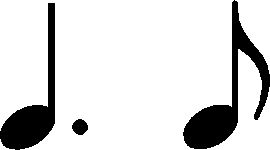



Page:
Source:
p. 11, b. 186-214
Main text
Prezentacja
Select
copy link
Main text

In AImaz a dotted rhythm is to be found three times here –  on the 1st beat of b. 204 and on the 2nd beat of b. 205 and
on the 1st beat of b. 204 and on the 2nd beat of b. 205 and  further on in b. 204. In the case of the latter, the dots prolonging the crotchets and the quaver flags were most probably added as a change of the initial version with two crotchets. In the final version of the Polonaise, this motif appears twice (also in b. 145-146), in which a dotted rhythm was used only at the beginning of b. 145.
further on in b. 204. In the case of the latter, the dots prolonging the crotchets and the quaver flags were most probably added as a change of the initial version with two crotchets. In the final version of the Polonaise, this motif appears twice (also in b. 145-146), in which a dotted rhythm was used only at the beginning of b. 145.
category imprint: Corrections & alterations; Source & stylistic information
issues: Chopin's hesitations, Dotted or even rhythm
notation: Rhythm
Missing markers on sources:
GE1, GE2, FE1, FE2, EE1, EE2, EE3, FES
